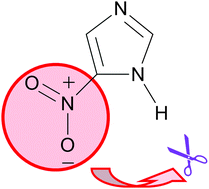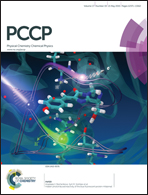Decomposition of nitroimidazole ions: experiment and theory
Abstract
Nitroimidazoles are important compounds with chemotherapeutic applications as antibacterial drugs or as radiosensitizers in radiotherapy. Despite their use in biological applications, little is known about the fundamental properties of these compounds. Understanding the ionization reactions of these compounds is crucial in evaluating the radiosensitization potential and in developing new and more effective drugs. Thus, the present study investigates the decomposition of negative and positive ions of 2-nitroimidazole and 4(5)-nitroimidazole using low- and high-energy Collision-Induced Dissociation (CID) and Electron-Induced Dissociation (EID) by two different mass spectrometry techniques and is supported by quantum chemistry calculations. EID of [M+H]+ leads to more extensive fragmentation than CID and involves many radical cleavages including loss of H˙ leading to the formation of the radical cation, M˙+. The stability (metastable decay) and the fragmentation (high-energy CID) of the radical cation M˙+ have been probed in a crossed-beam experiment involving primary electron ionization of the neutral nitroimidazole. Thus, fragments in the EID spectra of [M+H]+ that come from further dissociation of radical cation M˙+ have been highlighted. The loss of NO˙ radical from M˙+ is associated with a high Kinetic Energy Release (KER) of 0.98 eV. EID of [M–H]− also leads to additional fragments compared to CID, however, with much lower cross section. Only EID of [M+H]+ leads to a slight difference in the decomposition of 2-nitroimidazole and 4(5)-nitroimidazole.


 Please wait while we load your content...
Please wait while we load your content...